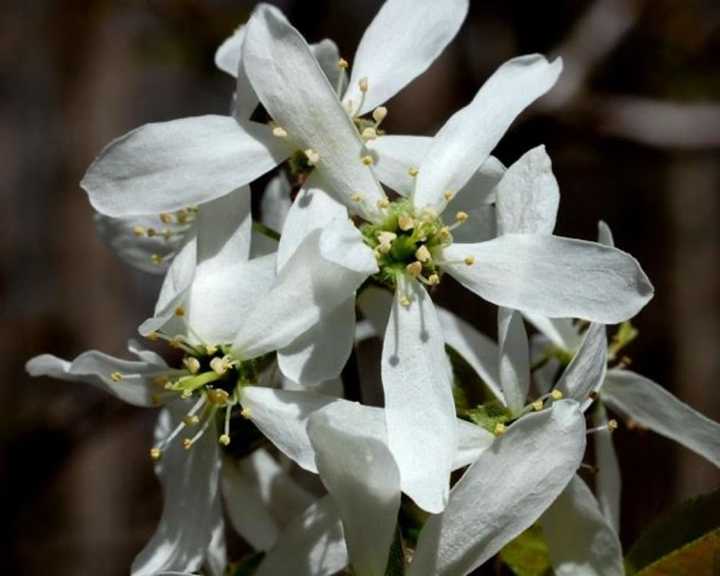Forage resources for bees are slim in March and April, but some of our native trees and shrubs are important early nectar and pollen sources. If you have the right conditions for these plants, make sure to include them in your landscape – an important step toward helping our challenged pollinators.
Red Maple (Acer rubrum)
Often blooming in March, the flowers of red maple are subtle and easily missed. The red flowers with yellow accents open before the leaves appear. The valuable nectar is found only on the male flowers, attracting early-emerging native bees like mason bees, mining bees and cellophane bees, as well as non-native honey bees.
Red maple is a large native tree best planted in moist, rich soil in full sun to light shade. For best results, buy red maples that are locally sourced and adapted to our region. Give them plenty of room to grow to maturity.
Pussy Willow (Salix discolor)
If you have a moist to wet spot in full sun, put pussy willow on your planting list. A large shrub with an upright form, pussy willow can bloom as early as March.
Pussy willow’s silky catkins offer nectar on both the male and female flowers (which occur on separate plants) and draw many native bees, including mining bees, small sweat bees, mason bees, cellophane bees, cuckoo bees, and non-native honey bees.
Serviceberries (Amelanchier species)
We have a number of species of native serviceberries, also known as juneberries. Their showy white flowers open in April and attract native mining bees, small sweat bees, and non-native honey bees. When successfully pollinated, serviceberries produce edible fruit in June, much appreciated by fruit-eating birds and humans alike.
There are serviceberries of many different sizes, from Running Serviceberry (Amelanchier stolonifera), which grows as a short thicket up to 6 feet tall, to Allegheny Serviceberry (Amelanchier laevis), which may reach a height of 40 feet or more.
Most species of serviceberries will do well in full sun to light shade, in moist to average, well-drained soil. Some species, like running serviceberry, are quite drought-tolerant.
Spicebush (Lindera benzoin)
A great native alternative to Asian forsythia, Spicebush is a mid-size shrub for shade to part-sun, best in moist soil. It typically blooms in April, before the leaves appear. Early, small native bees, as well as honey bees, nectar on the yellow blossoms.
Spicebush is also dioecious – plants are either male or female, and both are required to produce fruit, which only occurs on the female plants. If planted in close proximity, allowing bees to cross-pollinate, several females can be planted for every male. The fruit, called drupes, appear in late summer or early fall and are valuable food for migrating birds.
Kim Eierman, a resident of Bronxville, is an environmental horticulturist and Founder of EcoBeneficial. She teaches at the New York Botanical Garden, Brooklyn Botanic Garden, The Native Plant Center and Rutgers Home Gardeners School.
Click here to follow Daily Voice Mahopac and receive free news updates.
